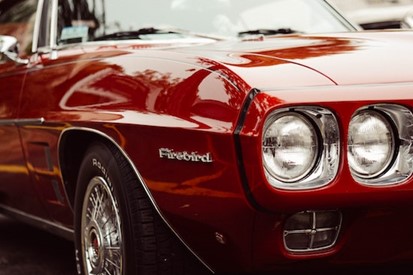
Brake fluid is essential for the safe operation of your classic car.
It ensures your braking system is working properly by transferring the force of your foot on the brake pedal into pressure on your rear and front brakes.
But does it make a difference which brake fluid you use?
Here’s what you need to know about brake fluid so you can choose the best option for your classic car.
Which Type of Brake Fluid Is Best for My Classic Car?
There are four main types of brake fluid: DOT 3, DOT 4, DOT 5, and DOT 5.1.
DOT 3 & DOT 4
At Master Power Brakes, we recommend using brake fluid that’s glycol-based such as DOT 3 or DOT 4. These brake fluids are hygroscopic which means they absorb water. DOT 3 contains a mixture of glycol and ether while DOT 4 includes a combination of glycol and borate. DOT 4 has a higher boiling point than DOT 3 so it’s better for high performance.
Though it’s not recommended, DOT 3 and DOT 4 brake fluids can be mixed but only in one way. If you already have DOT 3 in your braking system, you can add DOT 4. However, if your braking system requires DOT 4 or already has DOT 4 in it, you can’t add DOT 3. The main difference among brake fluids is the level of heat resistance, so you don’t want to downgrade from DOT 4 to DOT 3.
DOT 5
DOT 5 is another type of brake fluid that’s silicone-based and not hygroscopic. This means water pockets can build up within your braking system, causing performance issues and pedal problems. Rust may also develop on other braking parts and materials.
Classic car owners may want to use DOT 5 because it has a higher heat capacity than DOT 3 and DOT 4 and will not strip paint if it leaks. But, overall, this brake fluid is not a good choice if you want your braking system to perform safely and efficiently.
DOT 5.1
There’s also DOT 5.1 brake fluid, which was created because of the problems that silicone caused with DOT 5. This glycol-based brake fluid has the highest boiling point and is primarily used in high-performance and heavy-duty applications.
What Can Affect My Classic Car’s Brake Fluid?
As a classic car owner, you may not drive your vintage ride that often, which means temperature variation can become an issue for your brake fluid. Your braking system is sealed, so if the temperature is hot on the outside of the vehicle and cool on the inside of the vehicle, condensation may start to build up. As you can tell by now, water is the enemy.
This is why it’s important to flush out your brake fluid regularly, especially if your classic car has been sitting for an extended period. It’s recommended to change your brake fluid at least once a year. If you live in a colder climate, you may want to flush it out more often because water could potentially freeze inside the braking system.

Choosing the Best Brake Fluid for Your Classic Car
Now you know all about the different types of brake fluid and how to choose the best option for your classic car.
We recommend DOT 3 or DOT 4 because these brake fluids are glycol-based and hygroscopic. They are the kindest on your braking system.
DOT 5 has a higher boiling point and won’t ruin the paint on your car if it’s spilled. However, because it’s silicone-based and doesn’t absorb water, DOT 5 can cause performance problems.
And don’t forget DOT 5.1. It has the highest boiling point and is also glycol-based and hygroscopic like DOT 3 and DOT 4.
If you need help deciding which brake fluid to put into your classic car, the experts at Master Power Brakes can help. Contact us today!
